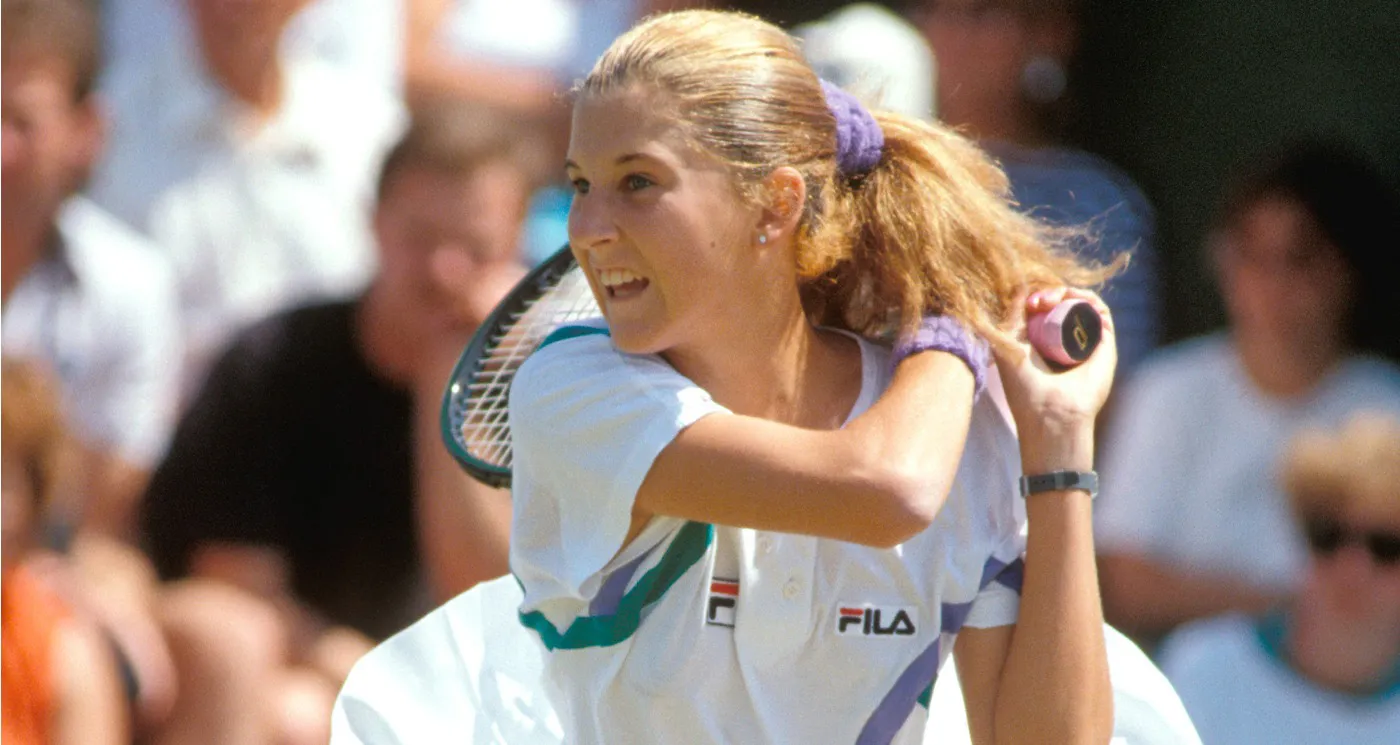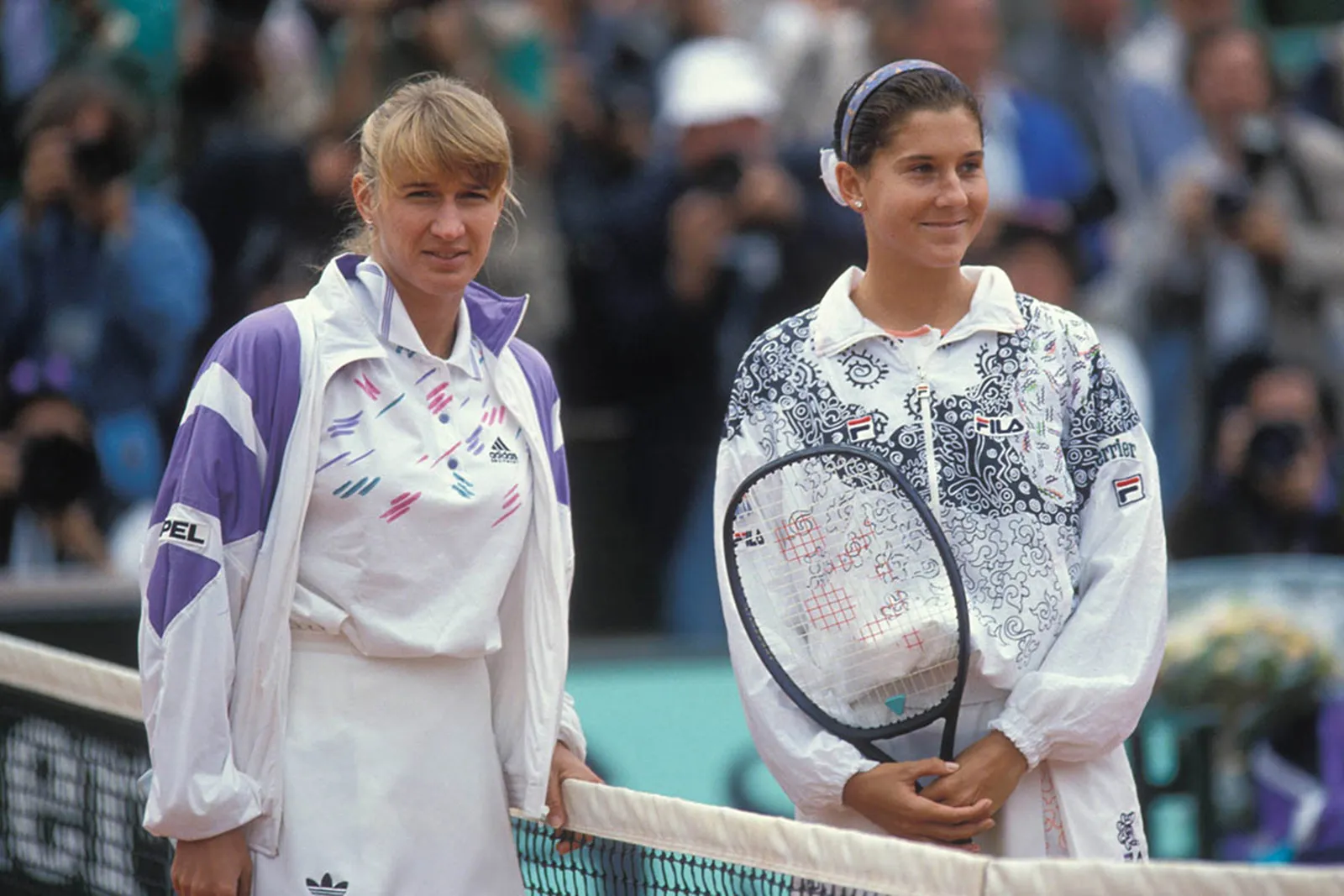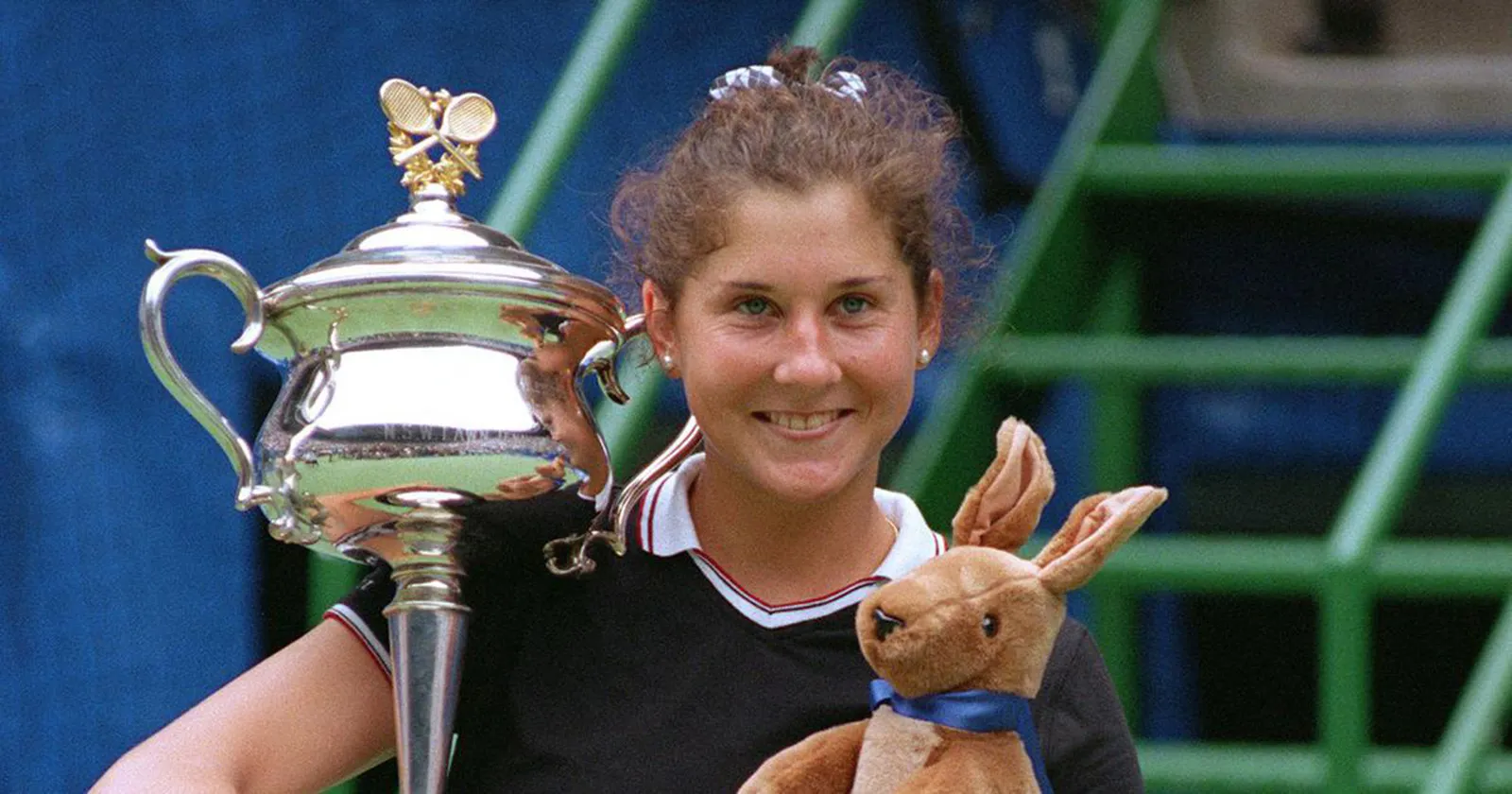How True Superhero Monica Seles Fought Her Way Back To The Top
For a time, Monica Seles was the most feared athlete on Earth, an irresistible force whose skill and power made her appear invincible on court. Tragically, her dominance was cruelly ended, not by a rival but by a rival’s fan, jealous of her success and willing to resort to cowardly violence to bring an end to her reign. The way Monica recovered from this assault won her respect and admiration from colleagues and fans alike, and provided inspiration to other survivors of violence; now that she’s retired she’s also opening up about the eating disorder that she silently struggled with throughout her career, and once again bringing inspiration and hope to others with similar experiences.

The greatest prodigy in tennis history
Monica was born in 1973 in Novi Sad in Serbia, which at the time was part of communist Yugoslavia. Her parents were Hungarian immigrants, and her father, Karoly Szeles, was a professional cartoonist and passionate amateur tennis player, and was already coaching Monica’s elder brother, Zoltan. Monica first picked up a racquet at the age of 5, but she was not allowed to play on the tightly controlled municipal courts, so her dad would string up a net between two cars in the local car park for her to practice.. Like her brother, she took to the game immediately; by this point Zoltan was 13 years old and the number one ranked junior player in Yugoslavia, and at first all Monica wanted to do was beat her brother. Her mother and grandmother disapproved, thinking it unseemly for a young girl to spend all her time playing sport, but they soon came to realize Monica was no ordinary young girl. By the time she was 13, she was the number one ranked junior player on Earth, and her potential was so great that she was already preparing to take on the seniors.
"The brand new social experience where you activate your gaming skills as you train like a spy."
- TimeOut
Take on thrilling, high-energy espionage challenges across different game zones.

She played in her first WTA tournament in Florida, aged just 14 years and three months, and was given a tough first round draw in the form of Canadian player Helen Kelesi, a top 20 ranked player. Seles beat her in straight sets, and moved on to the second round, where she faced an even more challenging draw in Chris Evert, coming to the end of her career but still ranked 3rd in the world. This proved a bridge too far for the 14 year old Seles, and there was a similar outcome in her next tournament the following week where she bumped into Gabriella Sabatini, the #4 ranked player. Six months later she made her professional debut and won her second tournament as a pro, defeating none other than Chris Evert in the final of the Virginia Slims tournament in Houston. She was barely 15 years old.
The New Queen of Grand Slams
With a WTA singles title under her belt, Monica now set her sights on winning Grand Slam events. Her next competition was the French Open, where she blazed a trail to the semi-finals without dropping a set or needing a tie-break, but her opponent in the semi-finals was Steffi Graf, not just the number one ranked player in the world, but in the form of her life and unbeaten in Grand Slam matches for 18 months. It was the beginning of an incredible sporting rivalry, and the first few matches went to the German star; Graf won their first meeting at Roland Garros, and then took the spoils at their next meeting in the third round of Wimbledon, but her dominance over Seles would only last one season.
In 1990, Seles scored her first win over Graf in the Hamburg Open, a warm-up tournament for the French Open the following week, and this proved to be a good omen for Seles when they met again in the final at Roland Garros. Monica won the match in straight sets, and picked up her first Grand Slam title when she was just 16 years, 6 months and 7 days old, a record at the time and one only subsequently surpassed by Martina Hingis.

The pair would not meet again for a year, in the final of a WTA event in San Antonio, Texas. Graf won the match and the tournament, but the balance of power was shifting. Graf had not won a Grand Slam title since her defeat to Seles at Roland Garros, and by this stage Monica had added an Australian Open victory to her trophy cabinet. By the end of 1991 Seles had supplanted Graf as world number one, and embarked on one of the most extraordinary periods of dominance seen in any sport; she went unbeaten for 41 Grand Slam matches, winning five consecutive titles. The only one that eluded her grasp was Wimbledon, where she did not compete in 1991, and in 1992 her unbeaten run finally came to an end at the hand of none other than Steffi Graf, who defeated her in the final. Seles then went on to win the next two Grand Slams, bringing her total as a teenager to eight. From the US Open at the end of the 1991 season to the Australian Open at the start of the 1993 season, she had won 55 out of her 56 matches. She later described how it was only after she had won the ’93 Australian Open that she began to feel confident in her abilities, but the rest of the tennis world was more confident; she wasn’t just the best tennis player in the world, she was going to be the best tennis player in history.
Horror in Hamburg, Magic in Melbourne
Tragically the world would never see what a confident Monica Seles could achieve. Her career changed forever at a WTA tour event in Hamburg, where a German fan of Steffi Graf named Günter Parche ran onto the court during a break in play and plunged a kitchen knife into Monica’s back. Parche later admitted that his intention was to end Monica’s career so Graf could be the world’s top player again, but the German courts ruled that he should not serve a custodial sentence on account of diminished responsibility due to severe psychological issues.
The impact on Monica was enormous. She physically recovered from the stabbing within months but the psychological trauma was more severe, and it took two full years for her to have the confidence to return to competitive tennis. When she did eventually return she won her first tournament back on tour, but it soon became clear that the recovery period had severely affected her game, both physically and mentally, and she was unable to recreate the crushing dominance of her opponents that characterized her teenage years.

Monica wasn’t done, though. She remained a top ten ranked player for the rest of her career, and was still capable of beating anybody at any time. One particularly memorable example was her return to Melbourne for the 1996 Australian Open. Seles had never lost in the competition, winning the title in her previous three visits between 1991 and 1993, and to the delight of Australian crowds she maintained this run in 1996 with her ninth Slam win, arguably the most impressive and important of her career. She was unable to compete in the following two championships due to injury, and so her next defense in Melbourne came about in 1999 where she finally succumbed to Martina Hingis in the semi final, bringing her astonishing undefeated streak - 33 wins and four titles over nine years - to an end.
A True Superhero’s Retirement
When Monica’s career as a player came to a close she was rightly lauded as one of the greatest talents to ever play the game, with many pundits lamenting the cruel way that she was prevented from realizing her full potential, but Monica now wanted to talk about other issues which had affected her during her career. In 2009 she published a memoir, Getting A Grip: On My Mind, My Body, My Self, in which she describes her struggles with Binge Eating Disorder, a poorly understood condition that was first described in medical literature in 2004, despite being by far the most common eating disorder in the general populace. Monica first began binge eating as a teenager and struggled with the condition, and the bouts of depression associated with it, throughout her career. She found it particularly difficult when dealing with the pressures of global success as a teenage girl, having to contend with the demands of marketing and media people who would frequently body shame her. The problems got worse during and after her recovery period from the Hamburg attack, with many pundits and even fellow players commenting on her weight after her comeback.

Monica now works to help raise awareness of Binge Eating Disorder, something that she is uniquely able to do thanks to her position as a legendary athlete. She has spoken of how she and other elite athletes are often perceived as immune to these problems - “oh you’re an athlete, you’re invincible, nothing gets to you!” - and how by talking frankly about her own issues with food and mental health she’s able to provide help and inspiration to others experiencing similar problems. The fact that she was battling her eating disorder from the start of her career, including the period where she was the single most dominant athlete on the planet, demonstrates how these issues can affect anyone at any time. Seles has spoken of how she wants to show fellow sufferers of the condition that they are not alone, and her determination to continue inspiring others through her post-tennis career is as superheroic as her efforts on court were during it.
SPYSCAPE+

Join now to get True Spies episodes early and ad-free every week, plus subscriber-only Debriefs and Q&As to bring you closer to your favorite spies and stories from the show. You’ll also get our exclusive series The Razumov Files and The Great James Bond Car Robbery!


Gadgets & Gifts
Explore a world of secrets together. Navigate through interactive exhibits and missions to discover your spy roles.
Your Spy Skills
We all have valuable spy skills - your mission is to discover yours. See if you have what it takes to be a secret agent, with our authentic spy skills evaluation* developed by a former Head of Training at British Intelligence. It's FREE so share & compare with friends now!
* Find more information about the scientific methods behind the evaluation here.


Stay Connected
Follow us for the latest
TIKTOK
INSTAGRAM
X
FACEBOOK
YOUTUBE